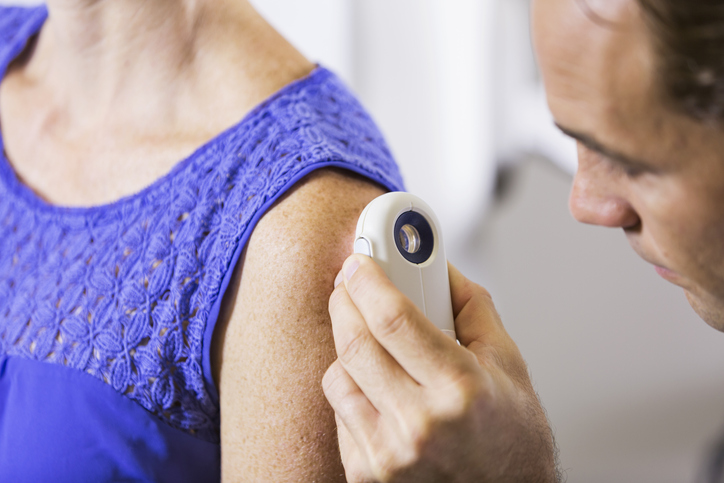What Is An Epidermoid Cyst?
At Sanova Dermatology, we pride ourselves on delivering top-tier skin care through a combination of experience, education, and advanced technology. Our team of highly experienced physicians are dedicated to providing treatment for epidermoid cyst. We have convenient locations across Texas, including Houston, Pflugerville, Austin, Bee Cave, and Dripping Springs. We also serve Louisiana with locations in Metairie, Old Metairie, Uptown New Orleans and Baton Rouge.
A new growth, bump, or mole on the skin can certainly be concerning. But not all growths are signs of skin cancer.
Epidermal inclusion cysts, sometimes referred to as sebaceous cysts, usually appear as under-the-skin circular bumps or nodules that tend to be painless. Cysts often appear on the face, neck, or trunk of the body, and are not usually considered a medical emergency.
Cysts are almost like a pocket that forms in the skin. We shed our skin everyday. When a cyst forms, the skin sheds into this pocket, and the pocket accumulates and fills with these shedding skin cells.
Epidermoid cysts form when the epidermis, the outermost, most protective layer of the skin, becomes implanted and makes its way deeper into the skins layers. The cause of these cysts is unknown, however trauma and a genetic predisposition have been implicated. The cyst begins to grow, shedding and sloughing off skin cells into the center of the cyst. As these sloughed skin cells dies, they leave behind their keratin proteins, that ultimately make up the cysts contents.

Cysts sometimes remain connected to the surface of the skin by what appears to be a blocked pore or punctum. Gently squeezing the cyst can cause its contents to exude through the punctum. While many are tempted to squeeze cysts and discover its thick white-yellow, foul smelling protein contents, it is discouraged.
This is far from popping pimples. Cysts that are irritated can become inflamed, painful and even get infected. This is often when cysts become a bigger medical problem that need treatment.
Treatment for the cyst can vary based on whether it is infected or needs to be drained. Injection of a steroid into the cyst can help reduce inflammation and discomfort. Infected cysts often need to be incised, drained and packed to avoid more serious problems and ensure proper healing. Cysts may also be surgically excised and entirely removed from the skin, which does not allow for their regrowth.
Contact Us
If you would like more information, or if you would like to schedule a consultation with one of our experienced dermatologists, please click here.
